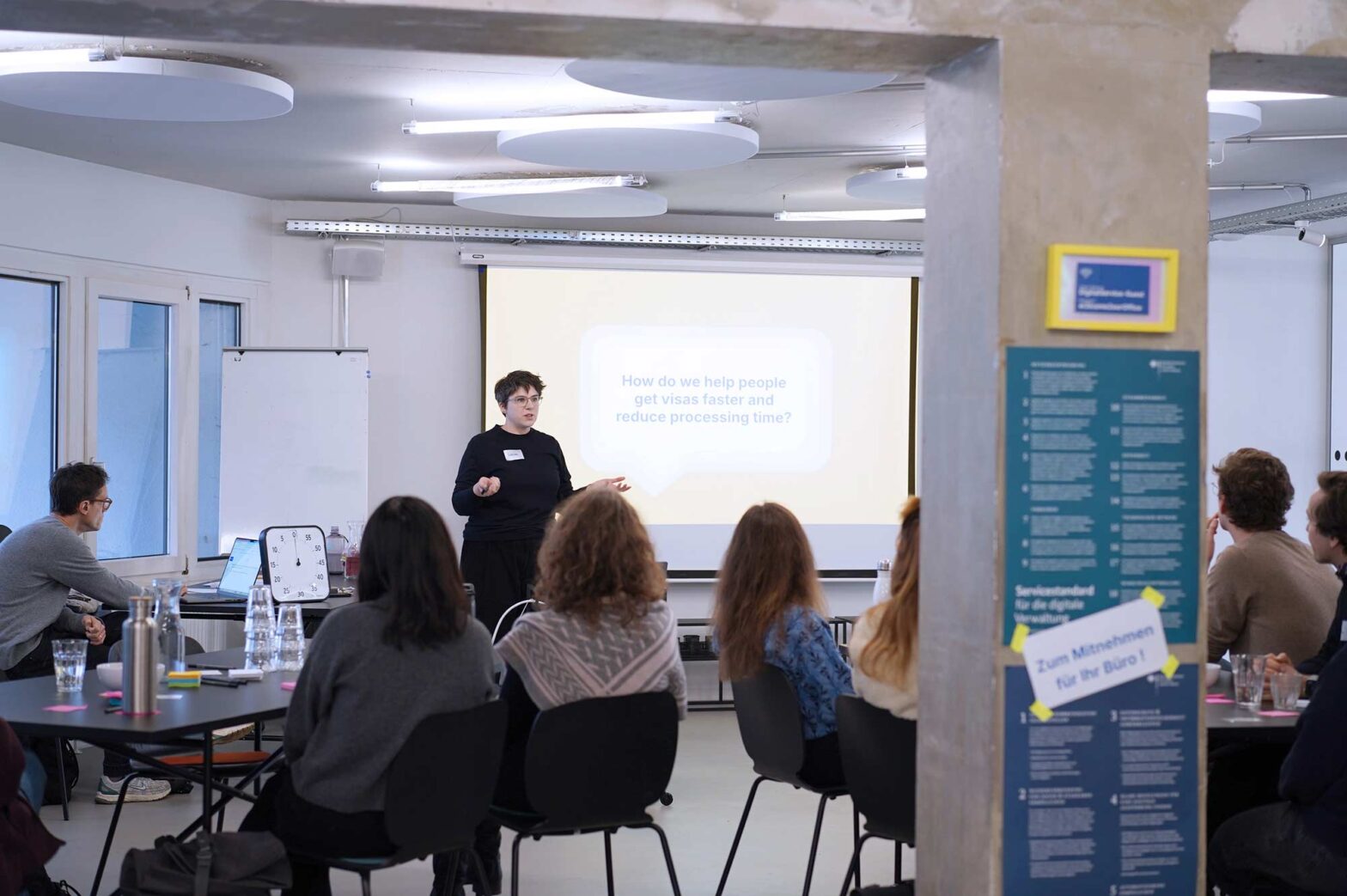‘Introduction to Service Design’ is back!
Running service design training again
After a 1-year break, the 1-day training returned – split over 2 days.
Some 16 colleagues from different delivery backgrounds joined: designers, product managers, software engineers, transformation managers, and user researchers. It was precisely the diverse makeup we were hoping for.
Sabrina and Marco ran the training while I helped with a section and was around for some hours. Sabrina and I ran it back in 2022 and 2023, while Marco was new to it.
Marco would have observed first, following our established train-the-trainer approach, then run it. In this case, we leapfrogged things a bit.
The training was once again well received. Some of the questions asked looked all too familiar:
- How to get started with service design?
- How do you break down big complex services into smaller parts?
- Is service design UX design minus UI design?
- How do you prototype services?
- How is service design done in other parts of the German public sector right now?
It’s back: Introduction to #ServiceDesign training is happening again at @digitalservice.bund.de. My colleagues Sabrina & @raabsolutely.bsky.social are running it in 2 parts today and tomorrow. So far, we’ve run it internally, but we plan to expand it to other parts of the German government soon.
— Martin Jordan (@martinjordan.com) February 11, 2025 at 3:35 PM
[image or embed]
We plan not to lose momentum. For a longer while, we knew a German version would be handy. Finally, we want to get to it. Before summer, we want to create a German-language version that’s localised with more examples from Germany.
More local content makes it easier for training participants to relate and more straightforward to transfer the concepts to their work contexts the next day. The primary audience for the training is our ministerial project partners. A secondary audience is other colleagues in government ministries, agencies and potentially public sector IT suppliers and digital outcome providers.
There could be a great benefit in broadening the perspectives of other like-minded people in government and supporting them in working on their projects towards some end-to-end service journeys.
In the mid-term, I could imagine us listing the training with the federal government’s Digitalakademie.
Presenting to the Digital Council
Early last summer, I was appointed to the Digital Council of the Federal State of Sachsen-Anhalt. Since then, I looked for an opportunity to talk about our work and approach we take at Digital Service. That opportunity materialised this week. I got about a quarter of the 2-hour slot for an exchange on user centricity.
I gave an input with a plain title: ‘Involve users – develop better offerings’. As usual, my slides of the talk are on GitHub.
Never skip any chance to talk to politicians about user-centricity! As a member of the Digital Council of the Federal State of Sachsen-Anhalt, today, I talked about #userResearch and its practical focus on using data to improve state offerings. Here are my slides: github.com/digitalservi…
— Martin Jordan (@martinjordan.com) February 13, 2025 at 6:12 PM
There was some time for questions afterwards, and it felt like the people present had gained something. But that is something that will only be evidenced in the council’s coming meetings.
Unpicking a party’s app sketch
Ahead of the elections, the Green party published on deutschlandapp.org to present their policy objective and investment focus. The so-called ‘DeutschlandApp’ is mentioned in their party manifesto.
In a slightly ranty thread I took a look. The most apparent thing: Once it gets interesting on the third layer of the app demo, it stops and asks the user to vote for the Greens. That layer would have been the most relevant one.
The sketch takes a quite conservative route by still retaining a form-based interaction model with the state instead of setting the goal to build proactive services.
While no service views are included, a list of applications is. It shows a confirmed status for parental benefits and birth certificate. A notification of a change of address is still in progress. It is unclear if the application tracker would lead to fully digital certificates and more. 8/X
— Martin Jordan (@martinjordan.com) February 12, 2025 at 1:43 PM
[image or embed]
What the sketch is good for: It’s a conversation starter. No other party put something similar together. That shows some commitment to shaping digital public services. One wishes party officials on a higher level would engage deeper with opportunity and constraints. Maybe we can get there in the end.
What’s next
Next week, I will familiarise myself with the current state of the government’s new-ish umbrella brand.
Ahead of the election, I will finish a draft for the SZ Digitaldossier, to which I was invited to contribute right before the election. I will share my views on where things are and what we can learn from the vastly different paths the US and the UK are taking.

